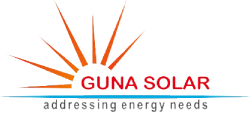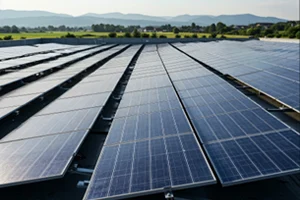Plant Optimization
At Guna Solar, Plant Optimization is a key pillar in ensuring long-term performance across all types of installations — residential, commercial, industrial, and ground-mounted. Our approach combines real-time monitoring, data-driven diagnostics, and proactive maintenance to keep your solar system operating at peak efficiency. From rooftop systems powering homes and factories to large-scale ground-mount plants, we tailor our optimization strategies to match your site conditions, usage patterns, and energy goals — ensuring higher yields, reduced downtime, and maximum return on investment.
Check Out Our Other Services
Why Choose Guna Solar?
Proven Experience
Over a decade of solar expertise with 180+ projects executed, including MW-scale ground-mounted systems.
Strong Industry Partnerships
Access to Tier-1 modules, inverters, and balance-of-system components from trusted global brands.
Turnkey EPC Excellence
Complete in-house engineering, procurement, and construction – delivering quality, speed, and precision.
Advanced Plant Monitoring
Real-time tracking of system performance through IoT-enabled dashboards and mobile apps.
Proactive O&M Support
Dedicated operations & maintenance team ensures high uptime and quick resolution of issues.
Customized Optimization Strategies
Site-specific performance enhancement through shading analysis, reconfiguration, and upgrades.
Data-Driven Performance Audits
Regular reviews and reports to identify underperformance and unlock hidden generation potential.
End-to-End Reliability
From design to long-term support, Guna Solar ensures your plant delivers consistent results year after year.
Plant Optimization Workflow
1
Initial Assessment and Data Collection
Conduct an in-depth assessment of the plant’s current performance, identifying key metrics such as energy output, equipment efficiency, and areas of inefficiency. Collect historical performance data from sensors, meters, and monitoring systems to establish baseline metrics.
2
Advanced Analytics and Diagnostics
Use data analytics tools to analyze the collected data, identifying patterns, inefficiencies, and potential areas for improvement. Run diagnostics on critical components (e.g., inverters, modules, trackers) to detect issues like energy losses, degradation, or system underperformance.
3
Performance Benchmarking and KPI Setting
Compare the plant's performance against industry benchmarks and establish key performance indicators (KPIs) for tracking improvements. Set realistic performance targets, such as increased energy yield, improved uptime, and reduced operational costs.
4
Optimization Plan Development
Develop a tailored optimization plan that includes corrective measures, equipment adjustments, and operational changes. Plan for possible upgrades, recalibrations, and integration of advanced monitoring or control technologies to enhance plant efficiency.
5
Implementation of Optimization Measures
Execute the optimization plan, including preventive maintenance, recalibration of equipment, and deployment of advanced control systems. Upgrade or replace underperforming components as needed to improve overall plant output and reliability.
6
Real-Time Monitoring and Control Enhancements
Install or upgrade real-time monitoring systems to track performance continuously. Integrate smart controls and automation to enable dynamic adjustments, optimizing plant output based on real-time conditions, weather forecasts, and load requirements.
7
Testing, Validation, and Reporting
Conduct thorough testing to validate improvements, including load testing and performance validation against KPIs. Generate detailed reports comparing pre- and post-optimization performance, highlighting gains in efficiency, energy production, and cost savings.
8
Ongoing Monitoring, Maintenance, and Continuous Improvement
Establish a regular maintenance and monitoring schedule to ensure sustained performance improvements. Use insights from continuous monitoring and periodic analytics to fine-tune plant operations, adapt to seasonal changes, and proactively address potential issues.
Key Benefits of Solar Plant Optimization
More from Your Megawatt.
Unlock the full potential of your existing solar asset with data-driven optimization strategies.

- Higher Energy Output Maximize generation by ensuring your system runs at peak efficiency.
- Better Financial Returns Enhanced performance leads to faster payback and improved ROI.
- Reduced Downtime Real-time monitoring and proactive maintenance minimize system interruptions.
- Long-Term Reliability Regular optimization helps maintain consistent performance year after year.
- Informed Performance Insights Detailed analytics and reports enable smarter decisions and continuous improvement.
What We Accomplished?
Proven Field Experience
Maintained over 180+ solar installations across residential, commercial, industrial, and utility-scale segments with strong performance metrics.
High System Uptime
Achieved >98% average uptime across projects through proactive O&M practices and robust technical support.
Real-Time Monitoring & Rapid Resolution
Implemented intelligent monitoring tools enabling instant fault detection and quick resolution, minimizing downtime.
Preventive & Corrective Maintenance
Established standardized maintenance protocols to prevent failures and extend equipment lifespan.
Performance Optimization Audits
Conducted regular data-backed audits to fine-tune system output and ensure long-term returns on investment.


